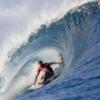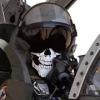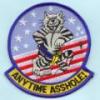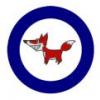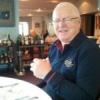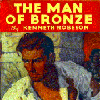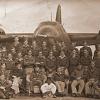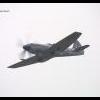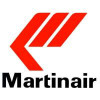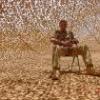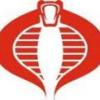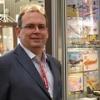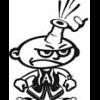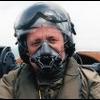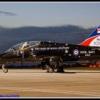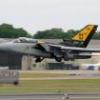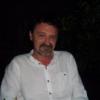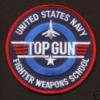Leaderboard
Popular Content
Showing content with the highest reputation on 26/09/12 in all areas
-
Well that does look horrible and mis-shapen - oh no, hang on, it's an Attacker, it's supposed to look like that ...2 points
-
OV-10A Bronco Testors 1:48 The Bronco was initially planned as a light attack, long loiter time aircraft with a span of 20ft that could operate from roads close to the combat zone, however it materialised with a much longer span of 40ft and heavier due to the specifications including avionics and ejection seats limiting its use to airfields. The twin boom aircraft first flew in 1965 and was destined to become a light armed reconnaissance & forward air control aircraft with the US Navy, Airforce and Marines. The need was bread out of the Cessna O-1 & O-2 becoming obsolete due to the limited performance. The requirement needed a two seat two engined aircraft that could carry over 2000lb of payload, 6 paratroopers or stretchers, high G tolerance and have a 350mph capability whilst being able to have a good loiter performance and STOL capability. The Marines were the first to take the OV-10 into service as a forward air controller operating in both night and day missions. Whilst the Bronco is most known for its operations in Vietnam, it also served in later conflicts as late on as the Gulf war where it received its last losses in US service before retiring in 1995. The USAF started to receive it's Bronco's in 1968 and was primarily used as forward air controllers. This was a varied role in itself, using smoke laying methods as well as later using laser target designators. Development also led to it carrying its own ground attack armament including rockets, machine guns and bombs to support ground movements. As well as a fairly small part played with the US Navy, seven export contracts were made, a few of which are still in service today with Venezuela. These included Germany, Columbia and Indonesia. Whilst it was an effective aircraft, it suffered from being underpowered, an issue that led to several aircraft being lost where it couldn't out climb the terrain. The Bronco has also seen non-military use in the war on drugs in South America as well as operating as a fire fighter. More recently, Boeing were looking into a new variant known as the OV-10X in 2009 as a modernised forward air control variant with the latest glass cockpit technology. There had been export interest in the possibility, however I'm unable to find any more news about how that proposal progressed. The kit If you're wanting to build a Bronco in 1/48, then you have a 'Hobsons Choice'. This is the old Italeri / Testors kit re-released. On opening the box, you're presented with the parts all wrapped up in a light grade polythene bag along with the instructions. On the front of the instructions is a poor image of the completed kit which does nothing to market the kit, it looks like a poor copy of a poor copy. On opening the instructions, you're hit with how basic the kit is, the instructions are very straight forwards. On a good note, there are written instructions that offer assembly tips such as painting options for some of the detail and in what order to paint them, something that you don't normally see in kits. Onto the sprues. My first impression is of the early Airfix kits. The kit is moulded in light grey plastic. Detail is very basic and the surfaces of the fuselage and wings are covered in heavy rivets with a mixture of raised and recessed panel / moveable surfaces. The main issues with the aircraft are widely known. The tail booms are too close to the fuselage and not accurately shaped. To correct this will require some extensive surgery to add extension pieces to the inner wings and of course the tailplane which joins the two tail booms. I guess for most builders this isn't an option that they'd be confident of undertaking. The remaining choices are either to live with this or to see if you can get hold of an out-of-production Paragon correction kit (review HERE) although I think you'd be lucky. The correction kit also addresses the cockpit or lack of with a resin replacement. With such a large greenhouse over the office, the kit cockpit is very sparse comprising a tub with side panels, seat and a decal only option for the panel, so you may want to add some scratch building to give it a makeover. Assembly starts with fitting the cockpit tub and nose wheel to the fuselage. This is either going to be a very fast affair if you build out of the box or very much longer if you don't. With the fuselage done, the sponsons housing machine guns and hard points are fitted to the underneath. The tail booms are another quick affair with the main undercarriage sandwiched inside the two halves on each side. With the wing assembled, it's fitted to the top of the fuselage and the tail booms and tail plane fitted into place. The remaining detail such as undercarriage doors and various antennas are fitted. Another observation is that there are no part numbers on the sprues. They are either on the parts or not at all. In the case of the undercarriage doors, they are on the inside surface which means you will need to sand them off. 4 iron bombs are supplied that fit onto the sponsons. Despite the chunkiness of the plastic in general, the fins on the bombs are quite thin. Despite the very basic appearance of the grey sprues, I was pleasantly surprised with the quality of the clear parts. These are quite refined and very little distortion. Now this could be a problem if you've not added some extra detail to the cockpit interior as it will be very much on show ! The canopy is moulded in three parts giving you the ability to have it open, however if you keep it closed, care will need to be taken joining the three parts without getting glue on the clear parts. The decals Scale master decals appear to be very nice. There's little in the way of colour due to the schemes supplied, but they are printed very sharply. The squadron emblems are very fine indeed and the stencil lettering can be read despite the very small size. The two schemes are: Aircraft 155483 - US Marine Corps - experimental paint scheme used on an OV-10D USAAF - 27th Tactical Air Support Squadron, George AFB, California Conclusion This is a very basic kit that's showing its age where the main sprues are concerned. It's comparable to the early Airfix kits in terms of its simplicity and surface detailing, although the clear parts and the decals are rather nice. It's a great beginner's kit, but if accuracy is important, most notably the tail boom positions, then you have some decisions to make as discussed in the review. If you really have to build a Bronco, then it's your only choice in town. For this reason, we should congratulate Testors, they have a niche and if the demand is there, then credit to them for supplying the need.1 point
-
This model is built from the Revell Sea King Mk.41. I added an etch set from Eduard and I also added a lot of detail using plastic card; stretched sprue; various diameters of wire; and items made from Milliput. I made a bit of a mistake when I opened up the engine hatches and didn't get the panel right. The model is of a Royal Navy Sea King of 771 Naval Air Squadron based at Culdrose on Air Sea Rescue duties. The decal are from Model Alliance. I painted the model with Humbrol enamels, inside and out. The model was weathered using Tamiya Smoke to darken the panel lines and Mig pigments to create the exhaust stains. Thanks for looking1 point
-
Hello all, Here is my next 'side' project: 1/72 AMT/Ertl B-52H, the infamous 'BUFF' I plan to make this as an 'up to date' machine, for CAS operations over Iraq and presently in Afghanistan. The kit: The plastic: Extras: I have a set of Buff Master Design HSAB's (heavy stores adaptor beams) as well as the Buff Master Design B-52H (late) update set which includes new resin engines to replace the kits undersized ones, a new tail and nose section (which I don't think I'll use due to the cutting involved) and all the lumps 'n bumps found on the modern Buff. Weapons will be in the form of 9 GBU-31's and 3 GBU-31(v)3/b (penetrator warheads) along with a Litening pod on the wing. Decals are from Eagle Strike and have been kindly donated by Jabba (thanks mate!). I have a copy of the Daco 'Uncovering the B-52H' kindly lent to me by Dave T (thanks mate!) which will be used throughout. The problems this kit has are well documented, particularly the lack of 'wing droop' so I plan to get around this by modelling it 'in flight' by inserting a brass pole just aft of the bomb-bay and attaching it to a wooden base. If I can be victorious over the 1/48 Revell B-1, this should be a piece of cake....(he says nervously!!!) More to come. Dave1 point
-
This is the Hasegawa 1/48 Hellenic RF-4E. The kit went together well but the decals were absolutely terrible. They were extremely brittle and some disintegrated beyond saving. Much of the yellow is all painted instead of decals and several spots had to be redone by hand due too crappy decals ruining the overall affect.1 point
-
Hello all, Here is my recently finished Hasegawa Harrier GR-7 in Op Telic guise, built for the Help For Heroes group build. Extras included a Pavla cockpit, Alley Cat 100% LERX, Model Alliance Decals, AMRAAM line TIALD pod, extended refuelling probe and Paveway II's, Steel Beach FOD covers, Aires exhausts and Flying Leathernecks canopy det cord. The build thread is here Comments welcome, Thanks for looking, Dave1 point
-
Finally finished this hanger queen, not my worst but definitley not my best. Not to hard to nail together and no where near as bad as some would have you believe. It looks ok sitting on the shelf keeping my GP Firefly company.1 point
-
- Not much comment to add about this well known excellent kit, easy to built and very spectacular on the shelves. A wonderful tribute to this old warrior very well rendered by Tamiya San1 point
-
1 point
-
Aaarg! Once seen, cannot be unseen. The Heldrake will no longer be scary and cool Thanks for the vote of confidence I think some of those are the ones that are in the first redesigned White Dwarf issue - there was a good conversion which set the cockpit back to where the turret would be, it gave quite a different feel. I like the one with props too! The side view of the doubled-up grey one makes me wonder what an Ork EE Lightning would be like - two engines vertically at the rear, a shock cone/'urty spike, and stubby wings... Cheers, Will1 point
-
DB601A/N Engine (for Eduard Bf.109) 1:48 Eduard Brassin The kit supplied engine for this stunning (and growing) range of 109Es from Eduard is a great piece of injection moulding engineering in itself, but if course it is subject to the limits of moulding technology, and that is proved in spades by this replacement resin engine set from Eduard's Brassin range. The set arrives in one of Eduard's by now familiar black oblong boxes, and on opening you are greeted by sheets of foam protection, plus three bags of various coloured resin and one of Photo-Etch (PE) parts. The largest parts are the engine block and the nose cowling, which are both exceptionally well moulded in light and dark grey resin respectively. The engine has individual ignition leads moulded in, supported by a fine framework of resin flash, which can either be removed or painted a dark colour to hide it against the engine block. Out of curiosity I removed a few of the supports using a sharp #11 blade in my scalpel and the small 1mm blade in my Mission Models chisel. It can be done, but you need to take it slowly and take care and the results will be well worth the extra effort. You have two options for completing the engine, depending on whether it will be mounted in the aircraft or not. If not, you can add the bottom rocker box covers, which would otherwise baulk the installation due to the thickness of the styrene underside of the fuselage. If you elect to show it free of the airframe, you will also need to create a believable trestle for it to rest in, or some sort of block and tackle to show it during removal. This is where you'll need plenty of references. Construction is relatively straight forward once you have the casting blocks detached, and here they have been minimised to ease removal, which will please most of us, as cutting chunky casting blocks with a razor saw can be troublesome. Two parts fix to the front and rear of the engine block, and some piping is attached to noted mounting points. The pipes are all resin, and have been attached to their casting blocks with wafer thin sprues to protect them, so will need care in removal. There also some PE lifting eyes to attach to the block, after which the horse-shoe shaped oil cooler and the supercharger are installed, the oil cooler having its connecting hoses built into the mould, and the supercharger having a nice PE grille added. The underside of the engine has the optional rocker covers, a V shaped pair of hoses (again optional), and some rather nicely moulded detail parts including the conduit for the supercharger. Installation of the engine in a suitable Eduard Bf.109 kit is straight forward, as it is simply a drop-in replacement for the kit assembly. All you have to do is remember to leave off the rocker box covers and hoses, and install the engine between the new resin bearers, which are again surrounded by a wafer of resin "flash" to be removed before installation. A scrap diagram is also included to show how the bearer fits around the ancillary equipment on the engine, which should help with correct installation. The it's simply a case of plugging it into the holes in the kit bulkhead, or the replacement resin gun bay set also from the Brassin range. New exhausts are supplied as linked parts, with the leading exhaust separate in order to ease installation within the rather tight confines of the rectangular ports. An auxiliary tank is also included for the port side of the engine for the E-7 Trop only, and the small oblong flat panels just above the exhaust are supplied as new resin parts with the lightening holes on the inner face, so that if displayed open, they will be on show. The main cowling is supplied as a very nice thin casting, to which two thin PE rails are added, as well as four fasteners to secure the cowling in place. The final part is a new supercharger intake with the thin surround that is a separate PE part on the kit. Conclusion This is a superb piece of resin engineering, and is as crisp as resin gets thanks to the delights of modern rapid prototype part design. Everything fits very well together as a result of this computer aided design, and makes the prospect of using resin aftermarket far less daunting to the uninitiated. The engine would look equally well installed in the host kit, or sat in a bench, in a trestle or on a hoist, and would certainly add a lot of realism to any diorama. The inclusion of realistically thin cowls certainly helps in that respect too, as does the extra detail for the underside of the engine usually hidden within the airframe. There are no colour call-outs in the instructions, but as there are quite a few pictures of the 34-litre beast on the web, there shouldn't be any issues with getting the look right. The majority of the parts can be painted as per the instructions of the host kit, and the rest can be found dotted around the net. Highly recommended. Review sample courtesy of1 point
-
1 point
-
That's a nice plan and something I've considered myself as I have a mastercraft Su-22M3 with libyan markings and tons of aftermarket parts in the stash. However I'll do something easier for this and build a kit OOB, a Tomcat or the beautiful RV MiG-231 point
-
These are the kits that HiPlanes introduced in the late '90s, early 2000's. They are short run kits that need a lot of work to clean every part but a good model can be built with patience. If you've ever built a HiPlanes kit you'll know what style I' talking about.1 point
-
Thanks Belle. I mixed that color using Tamiya Flat green and yellow zinc chromate until I got close to what I was trying to replicate.1 point
-
Nick, I think it is as much happenstance as anything else. Perhaps "standard placement" shifted to accommodate the Sky band (I can't remember!), but downstream of the factory there's a huge variety of how serials are handled- some are painted around, some are overpainted, some are REpainted, some are deleted or moved completely... I would expect factory application to be relatively consistent, barring a policy change, but even there they might wander! 'Mark', not sure what you mean about the aerial, but I was struck by the fact that all of the serials I listed (and W3377) still have the pennant and presumably the wire from mast to rudder. I thought that went away quicker than this!? Or is that another thing that the MU would take care of before issue to a squadron? As for the demarcations, what I compared (mostly on the fuselage) to factory seemed to agree well- where do you see differences? (I'm not arguing, just looking for enlightenment!) Tim, thanks for clearing up the photo date question. Yes, there are examples of spinners being different colours, but I still think it is more likely "off-Sky" (which might include white)- if you were wanting to make a splash, wouldn't you choose a colour that was more recognizably different? There is no question that contrast could exist between the underside colour and the spinner/band colour. I'm not trying to talk you out of it, but somehow I have trouble with the idea that they chose white specifically to be different. Disclaimer: Yep, lots of "I think", probably, maybe... I don't have all the answers, and I enjoy the exploration of these puzzles- I learn a lot in the process, and hopefully some others do to.1 point
-
1 point
-
This is the 1/48 Aircraft in Miniature RAF MD300 Tractor. What I know about this Tractor: It was used by the RAF to tow ‘big’ aircraft I can only find two pictures of the real thing, 72 AN 81 and 72 AN 58, the latter being the one I have based my model on. That’s about it… The kit is resin with white metal wheels and etch for the cab and details. The cab was very basic so I added a hand break, gear stick, pedals and a dashboard, all using artistic licence… The kit doesn’t come with any decals or glazing, I used some clear stock for the windows and masked the yellow, with number plates from spare decals. You can download the decal sheet and print it yourself or buy them separately from Hannants, this is to keep the cost down but really you don’t need much of them… I know it’s not an aircraft, but as its aircraft related, I thought it should fit here…1 point
-
Spaking of Starfires, I saw a Lindberg box of a supposedly 1/48 F-94C with the early radome. Is this a rebox of somebody else's old kit or their own ? I'm sure it must be something very crude (it wouldn't carry the Lindberg name otherwise...), wonder if it's really 1/48..1 point
-
1 point
-
Hello,Dear Occa Please,this is Spitfire Mk.XVIe (16e) ,no Spitfire XIVe. This version really big bulge over the engine had. Picture looks much different. Reality is really OK - coolers, propeller, negative engraving. The boxes contain all the alternate bulges and wheels. This model is no longer short run, is made using the same technology, such as Eduard models. When you see a model with your own eyes, you will be really satisfied. Also already preparing Spitfire Mk.XVI with high back. It will be in the distribution end of October. Sorry for bad English. Peter AZmodel /Admiral1 point
-
First update, sorry for the delay. Cockpit is largely done bar the rear bulkhead and seats, and of course the instrument panel. I lost a belt in the carpet monster so reverted the pilots belts to some that I had in a Luftwaffe WWII set, very similar but a little shorter, should do the job though all the same. And I can't stand working with tiny etch. The instructions called for the fit of a tiny U shaped etch to secure the belts at the back of the seats, but I left it off because I doubt much of that area will be visible to the eye even through the glasshouse canopy, and I wanted to keep my sanity! And here are the two side panels. I have since this shot applied some pastels as I have to the cockpit pics above. I also added a few silver dry brush marks to the cockpit to further replicate some wear and tear. I have also dunked the canopy in the Aussie Future equivalent, and will be moving onto the engine next. This is, can you believe it, my first ever Eduard kit, and it is a pleasure thus far. I am sure a certain cockpit fit may turn my the other way.....maybe.1 point
-
1 point
-
1 point
-
Thank you gentlemen. And Quentin this is especially for you. I use this highly unattractive bathroom tile that has seen better days. It does however have a smooth surface and is heat resistant. As you can see I sometimes use a fine line marker to sketch a few line to assist with lining up parts. This is easily removed later because nothing holds on this surface. In the lower left corner are the victims of this exercise. I just tape them into place. You can probably even superglue them but you have to keep the joining surfaces clear of all contamination. And yes the tape and glue will burn but as long as everything stay in place I don't care. Once a good soldering joint is made the parts can withstand a remarkable amount of misuse. (I.e. clean up) I prefer to use solder with a separate flux instead of the resin core solder. My favorite is a flux gel. With this stuff I can put a decent blob on the parts I want to join (forgot to take a picture) and it doesn't run all over the place. I think the flux is what transfers the heat instantly to the specific spot you've applied it. No flux no heat. Of course this only works when you touch the work with the tip of the iron for a split second. Anything longer and your artwork disintegrates into a mess. This is actually a reasonably successful attempt. Some joints have to much and other not enough solder but all parts are in the right place. And since this part will be somewhere in the depths of the fuselage nobody is going to see it let alone notice crappy joints. Cleaned up it looks good enough to me. As its turn to be added to the model is somewhere in the distant future we doe not want to lose it.1 point
-
PHOTOS HAVE ARRIVED!!!! This is far as i have got so far. The wings are stuck together, elevators are stuck together. The engines are glued and internally oainted. The fuse has been glues and filled. In the photos the parts are all fry fitted to her Thats it for now, hope you like it Thanks Bradley1 point
-
The photo of the underecarriage shows an A/B model as these had a different style of main wheel that originaly was painted black.1 point
-
And from UK? http://www.model-craft.co.uk/catalogue/High-Planes-1-72-scale.cfm V.P.1 point
-
Thanks Mish & Murdo for your encouraging comments, although I don't agree Mish, your Warrior is seriously good.... It has had a coat of Revell SM314 as it looks quite good as a faded sand colour, and a bit of weathering. Fastened to the base, (with just a couple of areas where the tracks are floating in mid air, spooky!). I need to start on all the gubbins,( there's that word again) these things carry. With a bit of luck, and the Missus giving me a stand down from domestics, I might have it finished soon......Smudge1 point
-
I've been tinkering away with the B-29 whilst not working on other builds. I've scratched the rear crew area, where the master fire controller sat as well as two side gunners/observers who sat next to the blisters on the side of the fuselage, again using plasticard, Evergreen strip and Milliput, as well as a few spare resin items from the spares box. I've dropped the floor adjacent to the blisters, as the observers' seats had a distinctive foot well and the main floor was higher. I've also scratched the two 'walls' immediately behind the lowered floor, and made the various shelves that will later be furnished with radios and electrical boxes. The raised gunner's seat will be immediately below another large blister on the roof of the fuselage, which he used for sighting the guns - this was made from parts raided from the spares box, plasticard and Milliput. I've kept the interior to a minimum here, as after a test fit of the blisters everything is very distorted and not much will be visible, especially once a coat of paint has darkened the interior. Also, and perhaps more importantly, is the need to keep weight aft of the mainwheels to an absolute minimum, as she's going to need tons of weight in the nose as it is! Here is the rear crew area in its current state: The tunnel that connects the forward and aft compartments slots into the bulkheads, and once glued will hold everything nice and rigid: A dry fit into the fuselage reveals everything fits as it should: A taste of things to come... the crew tunnel sits nicely along the upper part of the bomb-bay: These last few shots give an idea of the interior as it will be viewed through the 'greenhouse' - the loose detail parts have been left out and as this is a dry fit there are a few gaps, but these will disappear once everything is glued into place: Finally, an overall view of the fuselage: I think I'll tackle the tail gunner's area next, before work can commence on the bomb-bay. Tom1 point
-
A small update just to show the work hasn't stalled completely. Some progress on the instrument panel sans instruments but with rudder bar and matching footholes. I managed to break both loops while handling them for the picture They will probably be soldered on next time which is infinitely stronger. I had a bit of practice building the frame for the pilot seat. This contraption is made up of 10 tiny pieces of copper. Since my brother had borrowed my "proper" soldering iron I used this 60W behemoth which worked surprisingly well. As a matter of fact I will probably use it from now on. It transfers a lot of heat very fast. So the slightest touch is enough to melt the tin, if that is proper English. The trick is of course to only touch the work for a fraction of a second. And.. Use little slices of this secret weapon as a heat sink. Next I made me a pilot seat for a diet of sauerkraut und bratwurst. I have no other explanation for the hole. But it's in the windsock datafile so it must be correct. Just so you have an idea of the size of it. The padding on the "arms" is another experiment. I'm sure you all know the use of PVA or white glue for modeling purposes. I like to use the kind that stays water soluble after hardening. It dries kind of slow but clear(ish) and shrinks like mad. In this case I like: the water soluble part (correct my numerous errors) Don't like: the drying time (need that for corrections) Clear when dry ( can't see my numerous errors) Shrinking (you have to guesstimate the amount which leads to yet more errors) So I mixed some Vallejo leather brown for color and acrylic glue (Gator grip and the like) for a faster drying time. I was afraid the acrylic glue would negate the water solubility but fortunately it didn't. Alas other then applying it in thin layers I haven't come up with a solution to the shrinking that doesn't change the viscosity. I'm pretty pleased with the stuff and am surely going to use it for other applications. This is the last bit of work I can report. The padding around the pilot's office. With stitches of course. I'm having trouble finding more reference for the engine. All German WW1 airplanes but the Hannover had the ubiquitous Mercedes DIII or so it seems. I desperately need info on the 180 PS Argus AsIII so if any of you know a source please enlighten me. Thanks for watching1 point
-
Thank you all for all your comments and compliments, I appreciate them all. I am about to start on a HAS 1 from HMS Ark Royal, I just like the Sea King so much!1 point
-
1 point
-
I like your rendition of the Thunderbolt. Nice work on your build. Belle1 point
-
1 point
-
used to take 4 guys to fit or remove the liquid spring, they were very heavy, not a job anyone liked doing.1 point
-
1 point
-
Congratulations....a very nice and crisp model. Great painting work. Congratulations1 point
-
Time for an update. In this shot ive sirbrushed on some tamiya OD. She needed couple of coats being acrylic and then left to dry for her U/C to be cemented in place. The next stage was to implement some D-Day Stripes. First up the masking then the airburshing of tamiya white. Masking tape removed. Seems nice and neat. The it was onto the black. Now i tend to use anthracite to add a bit of natural weathering rather than the deepness that night gives. It seems to work well. Props were also painted as were the spinners.1 point
This leaderboard is set to London/GMT+01:00


